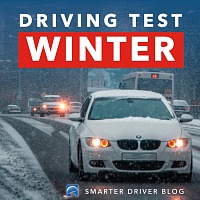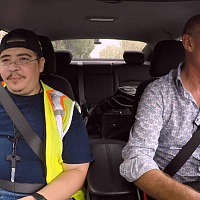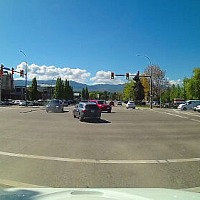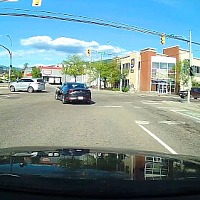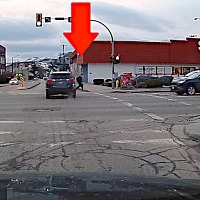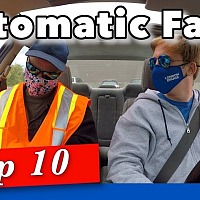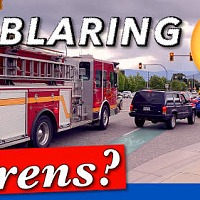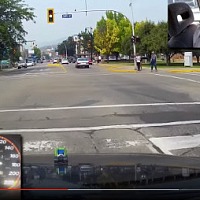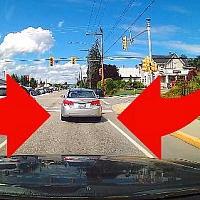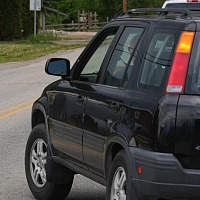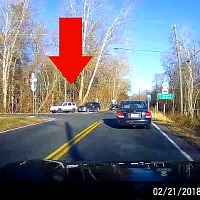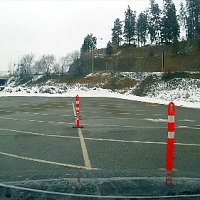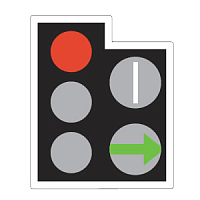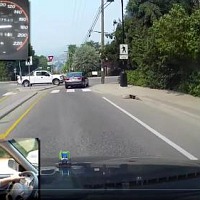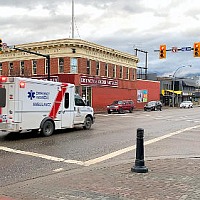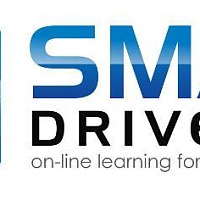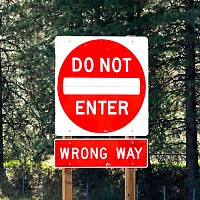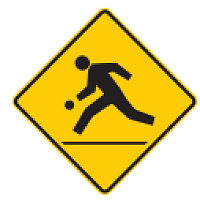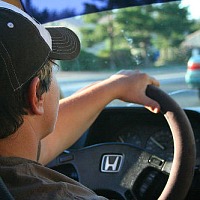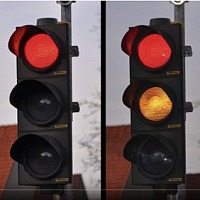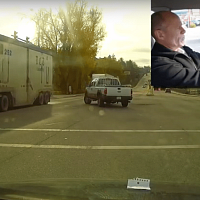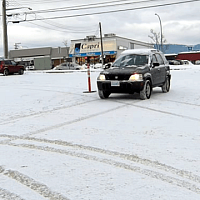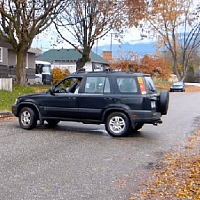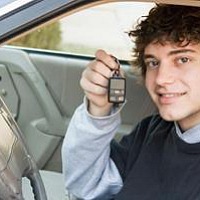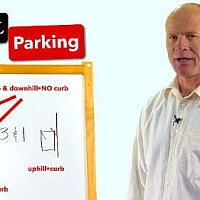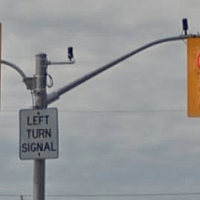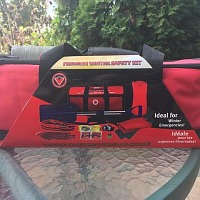Can someone who is legally blind earn a driver's license?
Can Someone Legally Blind Drive?
Summary
• A person with 20/200 vision is considered legally blind.
• For the DOT in Washington state and other licensing agencies, 20/100 is the minimum required for someone that is visually impaired to earn a license.
• People who are visually impaired can learn to drive.
• Overcast days are the ideal lighting conditions for drivers with low vision.
• Drivers with low vision need to use landmarks to locate the road. This driving technique also works for all drivers in inclement weather.
• Roads without markings or traffic are challenging for those that are visually impaired.
• If you have low vision and meet minimum licensing standards, GET your license.
Closed Caption
Introduction
- I didn't die, you didn't die.
- Nobody died.
(laughs) - So you should say we're back and we're still alive.
- We're still alive.
- We made it.
Apparently people with low vision can safely drive.
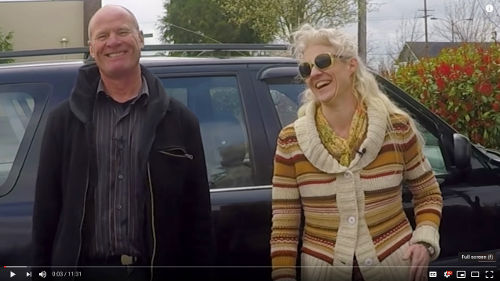
- Yes, yes here we go.
(upbeat music)
Hi there smart drivers, welcome back.
Department of Transport Revoked Jen's Driver's License When Eye Sight Deteriorated
Rick with Smart Drive Test talking to Jen today and Jen is getting her license again and is having some challenges with the DMV because she has low eyesight.
And so she's gonna talk to us today about that, learning to drive with that disability and helping other people with disabilities and eyesight issues.
And so you're not new to driving.
This isn't your first time.
So how long had you been driving previously?
- I drove for 16 years.
- Okay, and that was sort of, so when you were a teenager, when that was the first time you drove?
- I was licensed at 18.
- Okay.
- So I basically drove until I was 30.
- Okay, and then what happened at 30?
20/200 is Deemed Legally Blind
- They changed the rules and I was driving with an acuity of 20/200 at that time, considered legally blind, but they basically made me take several different driving tests so that I could basically prove that I could drive safely, which I did.
They changed the law in 2008 here to make it that 20/200 was not going to work, there was nothing you could do about it.
So it was dropped to 20/100.
I recently went to the eye doctor and was shocked to find out that my acuity is now 20/100.

- Okay.
- So of course after 10 years of not driving, but having been able to drive, I wanted to drive again.
- Okay.
- So I'm in the process of getting my license.
- Okay, excellent.
Understanding the Eye Sight Chart
And 20/100.
So what is that in terms of vision?
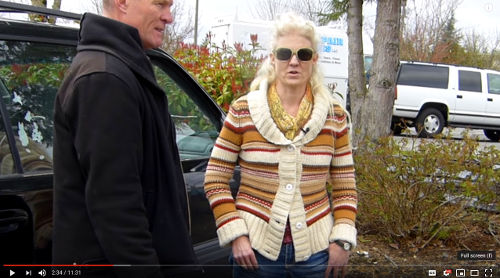
So must of us would think that our vision, or 20/20 is what we consider perfect.
Yours is?
- 20/100 is what you see clearly at 100 feet, I need to be 20 feet away from.
To see the same way you would see it at 100 feet.
Restricted Driver's Licenses (No Highways, No Night Driving, Must Wear Prescription Glasses, Etc.)
- So now some smart drivers may not know that there are restricted licenses and those types of things.
The last time, did you have a full license?
- No I started out with a full license, I had to take a highway test, a normal test, and a night test to have that.
I did have that, then when they asked me to retest, I had to do all of it again and I said I don't need the night, I don't need the highway.
I'll just get the regular.
So the last probably six years of my driving, I had a 55 mile an hour or less roads and no driving at night.

- Okay.
- So it was a restricted license, but it was fine.
That's all I needed.
- So it must have pretty heartbreaking when the DMV said you can't drive anymore. I mean after so long of driving.
- Yes it was very shocking.
It was pretty rough.
- Okay, so now you're getting ready to go back for road tests, and that's what I'm doing here.
Jen and I met online.
Jen sent me an email and I said hey listen I'll come down and we can do a video and help other people.
So now you're getting ready.
Jen's Concerns About the Road Test
So what are some of the concerns that you have in terms of going back for you license again now that you've already been driving for a while and been away for a little bit?
- The concerns I have is of course taking the test.
- Right.
- Because I've been alerted that my test is actually gonna be more rigorous this time than what I've had previously.
Whereas they're going to ask me what's the sign say, when do you see it, what color is it, what shape is it, what color is the car coming toward you, where are the police cars, et cetera, et cetera.
And to me that just feels like it's too busy.
It's too busy.
Either I can drive like you or I can't.
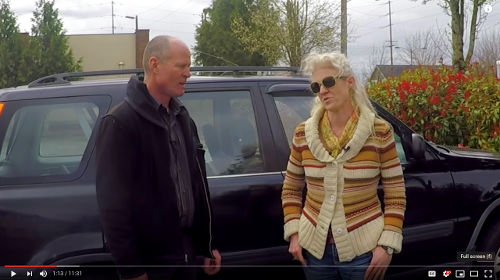
- So basically what we're gonna do today is we're gonna hook up the cameras in the car and we're gonna go for a drive with Jen and I'm basically gonna do an assessment and then give Jen a bit of feedback about what's happened or what she's doing and where she sort of stands in terms of getting a road test.
So it's sort of an assessment and then mock road test.
And so that's what we're gonna do.
We're gonna go get in the car and go drive.
In-Vehicle Driving Assessment
Do you have any concerns that you, things you want me to do in the car, what you want to see and those types of things?
- I just want your honest opinion if I should pursue a license.
- Okay.
- If I'm scary, I don't want to drive.
- Okay.
- Simple as that.
- Perfect.
So we're gonna go get in the car and go for a drive.

- Well I hope they don't say anything about this because this is actually easier to read than this as a clock face.
It takes me longer to see it and it's the dash color more so than anything else.
Not scary.
Ideal Driving Conditions are Overcast Days For People with Vision Impairment
- [Rick] So these are your ideal?
- This is my ideal.
All right so this light is red.
- [Rick] Yep.
- [Jen] And that's how far back I see it.
Now see, here's my adjusting place right here where I saw it way far back.

A lot farther back than I'm used to.
As soon as I would see it before I would have my foot, you know, off the gas, on the brake, and now I have a lot more time to really see it and adjust for it.
My driving on a road with no lane marked.
Which is horrifying to me.
Now I don't think I do it badly, I think I actually do it better now.
Picking Out Better Landmark to Compensate for Vision
- Now how about the utility poles down the right side there?
- Eh, you know, now that you mention it, let me try it.
Because generally I'll look at the ground or I'll try to look in front of me.
This is a horrifying road.
So the poles.
So I see this one and I see the one in front of it.

And I see the one in front of it.
Is it helping?
(laughs) From your perspective?
- [Rick] I don't know.
- [Jen] Am I good on the road?
- Yeah you're on the road.
- Like do I seem like I'm right?
- [Rick] Yes.
- [Jen] Okay.
So it might be helping then.

Best Steering Wheel Hand Position to Drive
It's going to take me a while to do the whole nine and three.
- Actually 10 and two works too.
- [Jen] Ours says nine and three.
- [Rick] Yeah they do.
And unfortunately there's a great deal of discrepancy about steering wheel position.
- Because I'm kind of like more like this.
I don't know why.
- [Rick] Yeah if 10 and two works for you, as long as you've got two hands on the steering wheel they're not crazy about that.
- And basically, yep you're pulling out in front of me and my foot is off the gas.
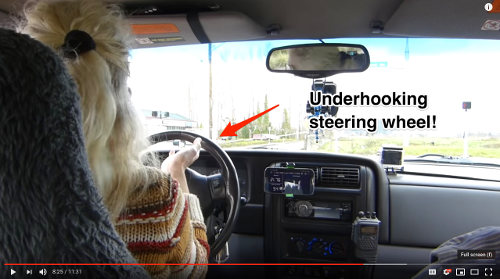
[SPEED] 33 [MPH].
Car behind us, good distance.
I'm watching these people.
- [Rick] I've been in the states for some years so I'm mentally adjusting to miles an hour.
- [Jen] Right.
No, this to me, this was a great place to come back and relearn because I'm familiar with the road.
- [Rick] Right.
- Now I feel pretty confident there's nothing gonna, you know, be weird that jumps out at me.
And you get me on a road I'm not familiar with though and you know, you slow down.
It's like, hey I don't know this road.
I'm not going to be driving the speed limit.
All right so this is always a little tricky spot, where you got people coming both ways, but as it is now I got nothing to worry about.
The car behind me is way behind me.
I'm at 40 miles an hour.
Preparing to Drive Only in Areas Where You're Familiar
- [Rick] But when at the same time, it's what you said to me is that you're not looking to drive in areas you're not familiar with.
You're just gonna drive.
- [Jen] Correct.
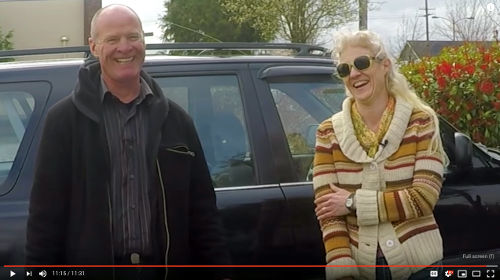
Yeah there's no point.
How to Centre the Vehicle in the Lane
- [Rick] No, your lane positioning is pretty good, but you're right about what Mark was saying that you are a little bit to the left.
- And I'm not sure how to improve that to be honest with you.
- One of the things you can try and do is have the fog line, this white line on this side is the fog line, and then run that.
That should be more or less in the center of the hood for you.
- The other choice is to go out on the highway where you have to literally hit 35.
And I don't want to do that.
Whereas here I can creep and get out.
Coming to a Complete Stop for the Purposes of the Driver's Test
- [Rick] So, and just for the license they're gonna be looking for a complete stop, right?
They're gonna want to feel the body settle back on the chassis.
Now, and the other thing that you're gonna, for the purposes of the road test when you turn the corners you're gonna have to keep your hand on the outside of the steering wheel.
- What did I do?
(laughs) - [Rick] Hook under.
- [Jen] Oh really?
- [Rick] Yep.
- So this is a light I have never taken.
Not that you should be scared.
But, okay, so I'm going to assume, because I see nothing on here, that I'm on a yield.

Unless there's a green arrow.
And if there is a green arrow, oh there is a green arrow.
Perfect.
Are you stopping?
Thank you.
- [Rick] You did it that time, but you caught yourself.
- Oh, well I didn't even know I caught myself.
Okay, so your hotel is by the lease way.
You tell me if I get demerits on this.
- [Rick] Only because you put your hand in the inside of the steering wheel.
- Ugh.
I am gonna just tell them don't make me do a left-hand turn then.
Because for whatever reason, I am bad at it.
- So quick review of the driving assesment
You saw us in the vehicle there and Jen, you know, didn't scare me and she kept trying to scare me, but it didn't happen.
(laughs) - Hold on.
Give me another chance.

- Yeah.
Give me another chance.
So the drive in the car and everything, it all went well.
Because one of the things you were looking for was you were trying to get a second opinion, because you've been driving with your husband Mark.
- Right.
Right, and I thought everything was fine.
A few little minor things that you need to sort of tune up for the license test.
But I mean other than that everything was great.
Yeah, so you, how did you feel about that?
- I actually feel great about it.
It's great to have another opinion that doesn't worry about a divorce after the fact.
(laughs) And you've driven with a lot of people.
You know what you're looking for.
So I respect your opinion.
You know, I don't want to have to drive with a lot of people I need only drive with one well.
So there you go.
Practice.
- And one of the other things that I did help you with is sort of looking for the utility poles along the road and other sort of bigger land.
- Bigger land markers, yes.
- Yeah, that can help you locate the road.
Because I mean, and this isn't just you, it's other people as well, right?
That are locating the road at night and in inclement weather and whatnot.
Jen's Advice to People with Disabilities Who Want to Learn to Drive
- I want to tell people that are in my situation, is if you have a chance, if you meet the acuity, try.
- Okay.
- Absolutely try.
Because the worst thing that can happen is, you know you spent the time, you spent the money.
You know my parents wanted me to drive, so I'd know how to drive, so that I wasn't really handicapped.

And it just turned out that I could drive.
So you know.
If they can try and not to listen to other people that look at you and go, nah you can't drive.
- Okay.
No that's brilliant advice.
That's really awesome.
- Because I mean, I didn't think I could drive either.
- Yeah.
- I thought they were just full of, you know.
Trying to get me killed really.
- No, that is really empowering.
- It turned out that it just happened and I did really enjoy driving.

I did.
Right now I don't enjoy it as much.
It's not every day natural.
- Yeah.
- But I did when I did it.
- Well and also you're up against a test. - Well and that does make you think about it differently.
Especially when you turn the wheel like that.
(laughs) - Minor.
Absolutely minor.
Okay.
Well we would like to thank Jen for doing a video and helping people out and talking about her disability with vision and those types of things and to let people know that in fact you can get a license.
So thank you so much.
- You're welcome.



